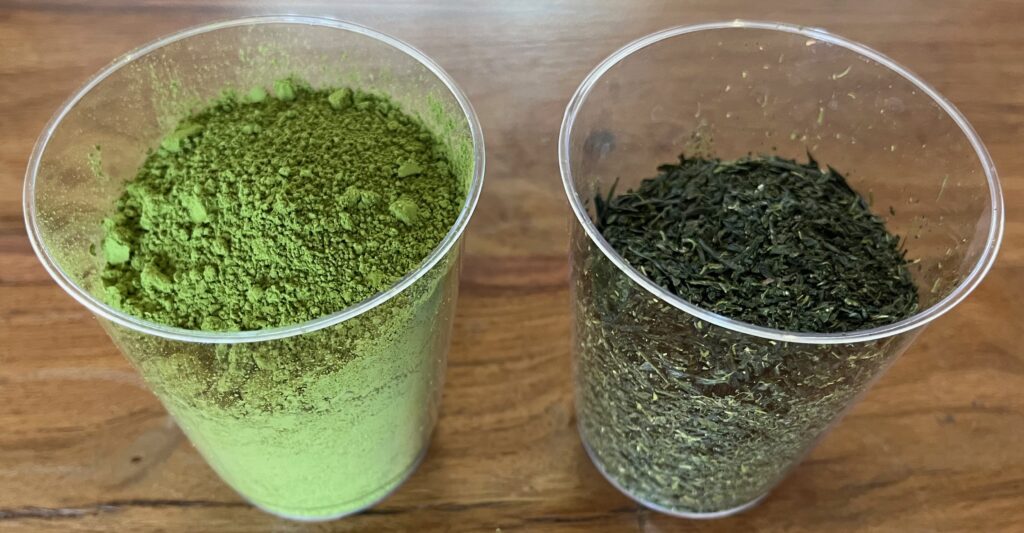
Have you ever encountered a green tea-infused beer? While uncommon in local breweries, the vibrant green Kyoto Matcha IPA from Japan showcases the potential of this unique ingredient. Inspired by this discovery, I began a homebrewing journey to explore the possibilities of incorporating green tea into beer.
My initial attempt wasn’t quite what I envisioned: aiming for a “Matcha Milk Shake Hazy IPA,” I replaced hops with matcha powder, hoping to harness its anti-bacterial properties and capture its distinct flavor. While the resulting ale possessed subtle matcha flavor, it lacked the anticipated green color. More importantly, the slightly tart beer revealed that matcha wasn’t an effective hop substitute in terms of anti-bacterial activity. But surprisingly, I liked it! This unexpected creation even achieved an impressive score of 44/50 in a homebrew competition, the highest score I’ve received in my brewing career so far!
Fast forward to Ikasu Brewing. As I explore unique Japanese ingredients, matcha once again captured my attention. This time, instead of an “accidental” sour, I envisioned an intentional sour ale infused with matcha. Building on my success with quick/kettle-sour ales like POM! (Catharina Sour with Pomegranate) and Guavahh! (Gose with Guava), I considered the possibilities of using matcha instead of fruit.
Sencha, another beloved Japanese green tea, also piqued my curiosity. While familiar with its grassy and vegetal notes from daily consumption, I recognized the significant differences between matcha and sencha:
Processing: Matcha undergoes steaming to retain its vibrant green color and intense flavor, while sencha is pan-fired, resulting in a more vegetal taste.
Form: Matcha is a fine powder, while sencha consists of loose leaves, impacting how they interact with the beer during infusion.
Given these distinctions, I opted for a Gose as the base style. Its characteristic use of salt and coriander seeds promised intriguing interactions with the green tea flavors.
Recipe (7 gal):
| Grain | Percentage |
| Pale Ale Malt 2-Row | 68% |
| Wheat Red Malt | 32% |
| Water Chemistry | Ca | Mg | Na | Cl | SO4 | HCO3 |
| Concentration (ppm) | 32 | 14 | 68 | 150 | 75 | 105 |
| Mash | Temperature | pH | Duration |
| Saccharification Rest | 150F | 5.4 | 60 min |
| Hops | Amount | Timing |
| Cascade | 2 oz | Hop Stand (175F) 30 min |
| Misc | Amount | Timing |
| Himalayan Sea Salt | 0.75 oz | Hop Stand |
| Coriander Seeds | 0.75 oz | Hop Stand |
| Matcha (or Sencha) | 4 oz | Day 5 on Primary |
| Yeast | Amount | Pitched Temperature |
| Swanson l Plantarum | 600 mL starter | 95F |
| Wy3711 French Saison | 1000 mL starter | 65F |
| Fermentation Profile | Temperature | Duration |
| Kettle Sour | 95F | Overnight |
| Primary | 65F | 9 days |
| Diacetyl Rest | 72F | 5 days |
| Cold Crash | 38F | 1 day |
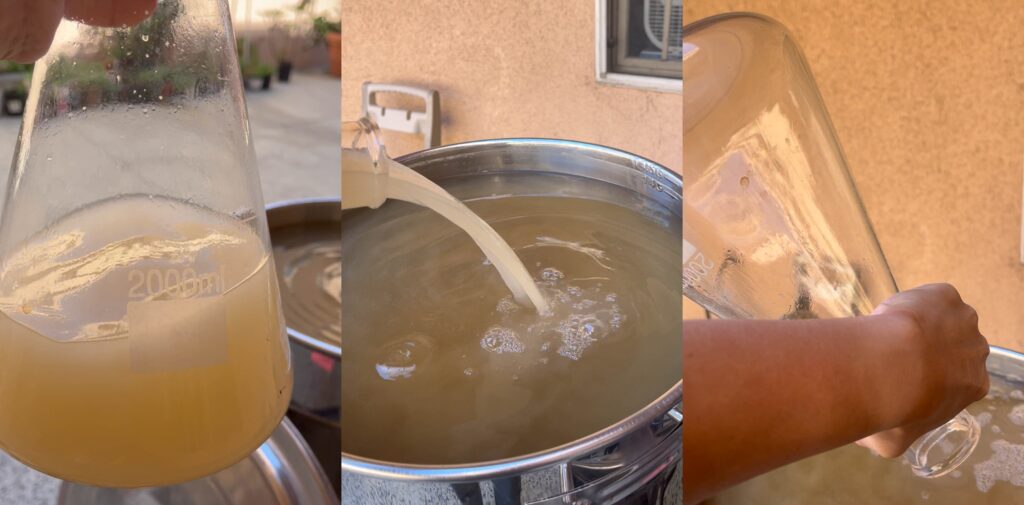
Kettle souring in general requires two-day (or more) brewing sessions. Day 1 is for mashing, heat pasteurizing, chilling, and pitching Lactobacillus (Lacto, the image above) to make the wort sour, which usually takes 16-48 hours. Then, day 2 involves heat pasteurizing the Lacto, adding hops, chilling, and pitching yeast. Most recipes call for an intense boil, which I believe is not always necessary (I’m someone who loves to save energy).
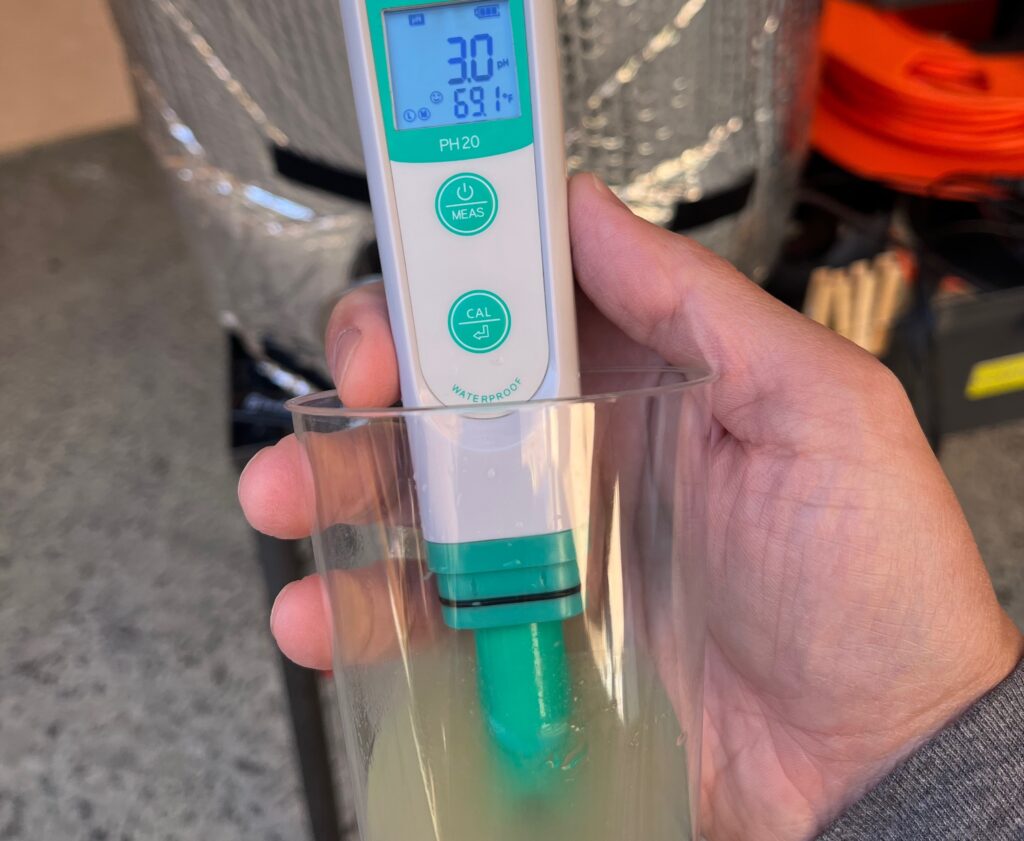
The next morning, I checked the pH, and it was already 3.0! The ideal range for kettle souring is typically 3.3-3.4. Why? Maybe I overpitched the super fresh Lacto?
Faced with this dilemma, I considered raising the pH with sodium bicarbonate, but I decided to hold off for a future experiment (“Can you fix too sour situations by simply adding baking soda?”). So, I proceeded with fermentation as planned. Surprisingly, despite sounding almost like pure vinegar, the beer didn’t taste that way.
Note: I later discovered that my pH meter misread the sample due to outdated calibration solutions. After all, the final beer ended up with a pH of 3.2, which is still a bit low but acceptable. This experience taught me the importance of not blindly trusting instrument readings and to rely on my senses as well. Mistakes like this can happen, so it’s crucial to be observant and adaptable during the brewing process.
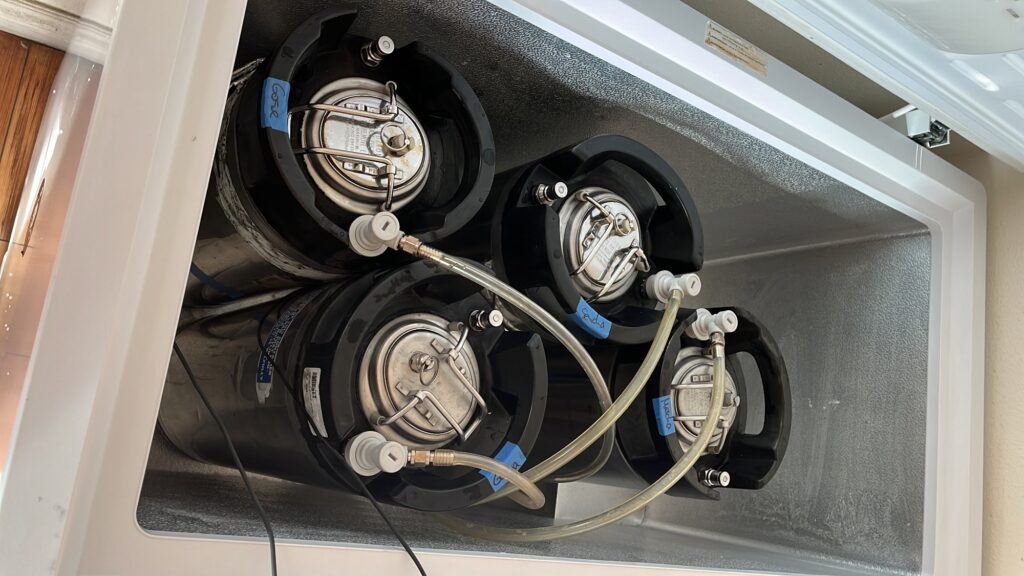
My new fermentation chamber, a kind courtesy from my president Andy Carter.
The 14-gallon batch was divided into four 3.5-gallon kegs:
1. Control Gose (baseline)
2. Matcha Gose
3. Sencha Gose
4. Guava Gose (not discussed in this post)
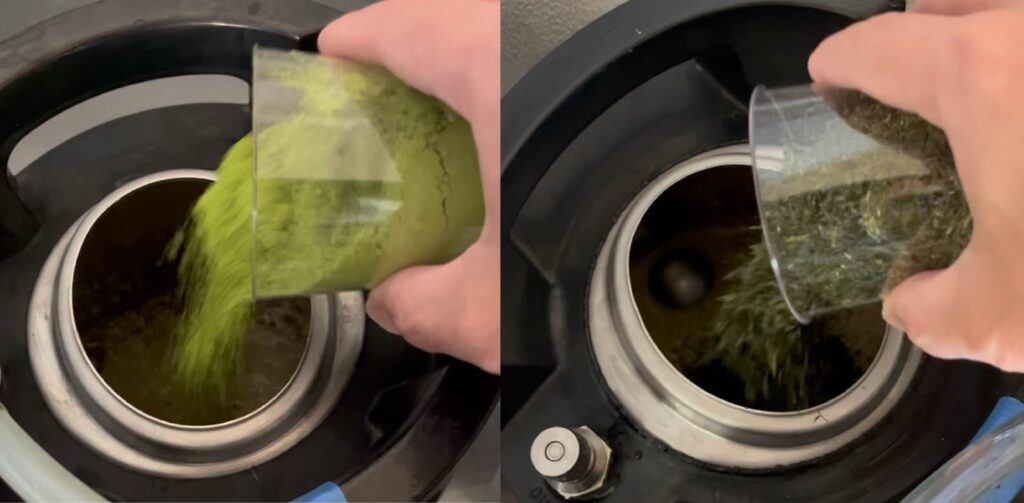
Left: Matcha, Right: Sencha
On Day 5, I added matcha and sencha to their respective fermenters. While the amount seemed significant, fermentation progressed normally.
| Control | Matcha | Sencha | |
| OG | 1.045 | 1.045 | 1.045 |
| FG | 1.007 | 1.007 | 1.007 |
| ABV | 5.0 | 5.0 | 5.0 |
| pH | 3.2 | 3.2 | 3.2 |
Although I originally planned to transfer the beers from fermenting kegs to serving kegs by Day 14, unforeseen circumstances, including a serving freezer (keezer) overhaul, caused a delay. Fortunately, on Day 21, I was able to transfer the fermenting kegs directly from the fermentation freezer to the keezer. This was possible because the kegs are equipped with floating dip tubes, allowing them to function similarly to unitanks.

C: Control, M: Matcha, S: Sencha
At first glance, they appeared completely identical. None of the beers had any green coloration. Tasting revealed surprisingly subtle tea aromas and flavors in both the matcha and sencha variations. To confirm sensory differences, I conducted 5 semi-blind triangle tests. The results were:
Control vs Matcha: 4/5 correct (statistically significant)
Control vs Sencha: 5/5 correct (statistically significant)
Matcha vs Sencha: 2/5 correct (no statistically significant difference)
While I could distinguish control from both tea variations, differentiating between matcha and sencha proved challenging in the context of the Gose. This led to a slight disappointment, prompting me to order more tea for a second attempt with a potentially stronger infusion.
Further experimentation with adjusting pH and final gravity is necessary, as these factors can intensify astringency from green tea. Additionally, achieving the vibrant green color characteristic of matcha remains a future pursuit. However, I personally enjoy the beer with green tea flavor without a murky green appearance, similar to my preference for pale ales with coffee flavors.
Sencha, with its affordability and more pronounced aroma, is currently my preferred choice for future exploration. Additionally, sencha alleviates the challenge of achieving the desired green color. This unique ingredient shows promise for adding a distinctive character to our beers and contributing to the overall identity of Ikasu Brewing. This is just the beginning of the journey, and I am eager to share future discoveries with you!
Cheers!

GTG is one of my favorites. It’s truly fantastic! Thanks for sharing such detailed info and this creative recipe. Cheers!
Thanks! You’re totally welcome to make your own and let me try it!